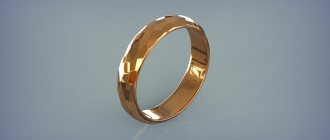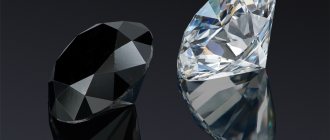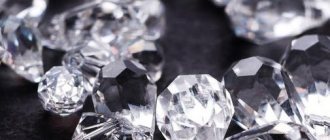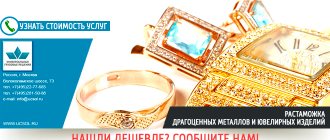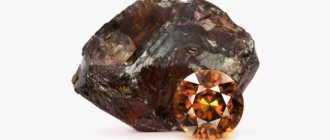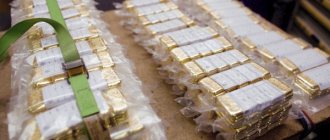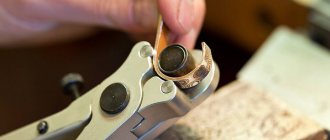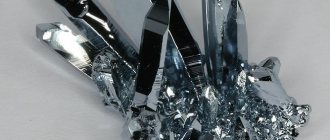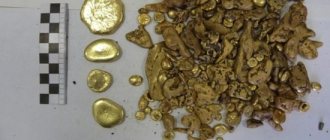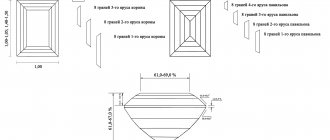Expertise is usually understood as the carrying out of a study of a particular object by a specialist in a given field of knowledge who has the status of an expert. The main goal of gemological examination is to obtain well-founded answers to questions posed to the gemologist. The final result of the examination is a certificate of conformity or an expert opinion.
Examination of a specific piece of jewelry helps to establish:
- what materials are used as inserts and their origin,
- quantitative and qualitative parameters of jewelry stones.
Gemological examination is a complex of studies of precious stones, loose or as part of a piece of jewelry. The main task of the procedure is to diagnose the insert, determine its nature of origin and classify gemological characteristics based on international (ISO TR) or Russian (GOST R, TU, STO) evaluation standards.
Valuation is the final stage of expert work, carried out on the basis of a gemological report. It is carried out after a comprehensive examination of the product. The price of jewelry and precious stones is determined based on studying the market of analogue products and monitoring foreign price lists for colored stones (gemguide.com) and diamonds (RapaportDiamondReport - diamonds.net).
What is gemological examination?
Gemological examination is a complex of studies that combines materials science and commodity examination of jewelry inserts - precious and semi-precious stones, their synthetic analogues and artificial materials (glass, plastics, etc.).
Diamonds
Jewelry
The materials science part of the examination consists of determining the mineral type and variety of a stone or other material, the nature of its origin and the presence of refinement.
The merchandising part consists of determining consumer properties based on visual perception and expressed in quality characteristics defined in accordance with one or another regulatory act.
Methods
At the moment, the most common methods of conducting gemological examination are :
- luminescent examination;
- electron paramagnetic resonance method;
- optical method - allows you to determine the name of the stones;
- microprobe, i.e., the method of X-ray spectral microscopic analysis, allows you to examine metal alloys without destroying them;
- Raman spectroscopic method.
Cost of preliminary examination
Primary (diagnostic)
oral 700 R
- Determining the mineral type of stone or other insert material
- Determining insert weight in carats for loose inserts
- Determining the nature of the origin of the insert (stone) - natural, synthetic or artificial
- Detection of the presence/absence of improvement (visual research methods)
700 R
Standard
from 1,700 R
- Determining the mineral type of stone or other insert material
- Determination of the estimated mass of the insert fixed into the jewelry item , in carats
- Determining the nature of the origin of the insert (stone) - natural, synthetic or artificial
- Identification of the presence/absence of refining, its type and degree of impact on the cut stone (including spectral research methods)
- Determination of quality characteristics according to ISO TR (GIA)
- Based on the results of the examination, a “PRELIMINARY STUDY REPORT” is issued - it is not a certificate of conformity
from 1,700 R
Extended
from 5000 R
- Determining the mineral type of stone or other insert material
- Determination of the estimated weight of the insert fixed into the jewelry, in carats
- Determining the nature of the origin of the insert (stone) - natural, synthetic or artificial
- Identification of the presence/absence of refining, its type and degree of impact on the cut stone (including spectral research methods)
- Determination of quality characteristics according to the standards of STO MHz, ISO TR (GIA) and in accordance with GOST
- Determining the area of origin of natural stones, such as emerald, ruby, sapphire, etc. (only for loose stones)
- Determination of additional individual characteristics of the stone through a comprehensive spectral study
from 5,000 R
Tariffs and prices
Where to go?
Today, research in this area is carried out by certified state expert centers and independent gemological laboratories .
State gemological centers have an advantage over private laboratories because they have broader powers.
For example, the result of a diamond examination carried out in an independent gemological laboratory will be a conclusion based on the opinion of the experts who conducted it.
An independent laboratory does not have the right to issue a corresponding certificate for the diamonds being examined .
Independent gemological laboratories, although they issue appropriate conclusions, are inferior in scale to state laboratories and do not enjoy respect abroad.
To conduct an examination in one of these institutions, you need a court decision or a written application .
A buyer who has doubts about the quality of the purchased jewelry has the right to resort to the services of gemologists.
If the examination confirms that the purchased product is a fake, the buyer will have to file a corresponding claim with the seller .
If the seller does not respond in any way to the buyer’s complaint, the latter, to restore justice, has the right to go to court .
The buyer's expert opinion can be presented in court as evidence against the seller.
How is gemological examination carried out at the Moscow Gemological Center?
Gemological examination in the MGC laboratory is carried out in the presence of the client. Laboratory clients are accepted by appointment, during which the client is allocated a certain time in accordance with the amount of work expected.
The examination is carried out on a collegial basis in accordance with the regulations and methodology for carrying out work approved in our organization.
The procedure for conducting examinations is based on the principle “from simple to complex”
First, a preliminary inspection of the product, insert or stone is carried out, then weighing, measurement, and description of the appearance.
Next, tests and determinations are made using the simplest gemological instruments - testers and detectors, and only after that a study is carried out using more complex gemological equipment (optical, spectral and other types).
After a diagnostic study, the qualitative parameters of the gemstone are classified. Moreover, experts carry out all work independently of each other. And only if there is a discrepancy in individual results, additional experts are brought in.
The results of the examination are formalized in accordance with the approved standards of the organization of the STO MGC , which take into account domestic and international practice in conducting diagnostic and classification examinations.
How to distinguish natural stones from fakes
This passion 2 years ago appeared suddenly and mutually - I really fell in love with stones... natural... and it doesn’t matter whether they are precious or not. I feel their energy... they are charged with the power of the earth, mountains, water. For me, stones are not only natural beauty, but an entire universe with its own laws.
I am often asked how to tell a real stone from a fake. Well, the main thing, of course, is to take it to a specialist...he will definitely determine the truth. But often, we are faced with a choice only at the beginning of our purchase. The Internet is full of advice on what to do: put it in acid, try to crush it, x-ray it, etc. Well, yes, these are the things we usually go to jewelry stores with. I decided to share with you how to try to distinguish some natural stones from artificial ones in the simplest and most accessible ways.
Aquamarine This mineral is very similar to topaz in color and even inclusions. However, topazes do not have inclusions characteristic of aquamarine, reminiscent of a white chrysanthemum.
Aquamarine is also imitated with both ordinary glass and less valuable minerals: synthetic spinel, artificial quartz. You can distinguish them from real aquamarine simply by looking at the stone from different angles: aquamarine slightly changes its color scheme, but there is no imitation. All glass imitations seem warmer to the touch, unlike real stone. If the stone is not set in the frame, you need to hold it with tweezers (so as not to heat it with your hands) and touch it with the tip of your tongue - the stone should be cold.
Alexandrite This is a very rare stone, large specimens are unique. The main parameter that will help you determine naturalness by eye is the price. Alexandrite jewelry is very expensive!
Alexandrites are counterfeited with rubies with the properties of the multi-colored mineral in different lighting conditions. Also counterfeited with glass.
Diamond To imitate diamond, colorless zircon, synthetic rutik, strontium titanite, synthetic colorless spinel, synthetic colorless sapphire are used. Diamonds are counterfeited quite often with such minerals as monsonites (almost indistinguishable without special equipment), cubic zirconia, leucosapphires, etc. When examining a diamond with the naked eye, it must be taken into account that it is processed in such a way that almost all the light entering the stone through the crown is completely reflected from its rear faces, as if from a series of mirrors. Therefore, if you look at the light through a cut diamond, only the luminous point in the stone will be visible. In addition, if you look through a diamond in a ring placed on your finger, it is impossible to see your finger through it. Well, it’s a well-known fact: diamond leaves scratches on the surface of glass, as well as on the polished surface of other stones. When you get home, you can check your purchase again.
1. For example, to distinguish a diamond from spinel and synthetic sapphire, as well as crystal glass, you can use water and glycerin. Counterfeits will be very difficult to see in liquid, but the diamond will shine brightly.
2. If you rub sandpaper on a diamond, it will not leave scratches, but on other minerals it will leave roughness.
Amethyst
Amethysts that are pure and bright in color are precious. The properties of real and synthetic amethyst are very similar and it is not easy to distinguish them.
Artificial mineral is now used by jewelers quite often, as it is produced on an industrial scale.
In contrast, amethyst-colored cubic zirconia can be recognized: they heat up faster, this can be determined, for example, by applying them to your face.
Turquoise It is even counterfeited with plastic, which of course is not as porous and smooth as the real thing. Also, by refining in the laboratory, low-grade turquoise is transformed into high-quality turquoise. There they can glue small particles of turquoise, process them with temperature, and much more. Even enamel, compressed turquoise powder, and the cheap mineral Howlite are passed off as turquoise. In general, natural turquoise without defects is an almost incredible phenomenon. Crystals made from crushed turquoise with glue are difficult to distinguish from real ones. And only over time do the fakes acquire a dirty tint.
Rock crystal Artificial rock crystal is obtained from quartz mixed with lime and soda. Dishes are also made from this mineral. Stone is also counterfeited with simple glass.
The difference between real rock crystal is that it does not have high thermal conductivity, unlike fakes. Real rock crystal is always cool to the touch. Also, looking into the inside of a natural mineral, you can see a slight haze there.
Grenades. There are many colors of garnets, they are loved and willingly bought.
Garnets are among the precious stones that have the power of magnetic attraction. Accordingly, it is easy to check their naturalness using a magnet. I won’t explain how to do this, since this can only be used at home and if you have metal scales. But, perhaps, thanks to this property, garnet is lucky - it is almost never counterfeited.
A simple method of identifying a natural stone concerns its size, since a garnet itself cannot be larger than a “Bob”. In practice, the size of the stone does not exceed the size of a grain of a plant - a pomegranate.
Pearls The word “pearls” without definitions is allowed to be used only for natural pearls. Pearls found in nature are much more valuable than cultured ones (due to the introduction of a bead into a mollusk shell). Large natural pearls are very expensive, unlike their analogues.
Try pearls “on the tooth” - lightly bite the pearl. The taste of sea sand will remain in your mouth. It can even crunch on your teeth. This is due to the fact that the pearl consists of very small “scales” of mother-of-pearl, not visible to the eye, but creating the effect of “burrs”. These are the most important and simple signs of distinguishing an original from a fake. If the seller begins to object to such an experiment, feel free to doubt the quality of the product.
It is also quite easy to “scratch” the “bead” with the tip. See the horror in the eyes of someone who is trying to sell you jewelry - this is direct evidence of a fake. True connoisseurs and professionals are well aware that there is nothing wrong with such testing of pearls. It is he who has such a magical effect: when trying to leave a scratch on it, you will first see it, but then rub the “bead” with your finger, and not a trace will remain of the damage. If the scratch remains and, moreover, some layers of paint or real material have been exposed, then this is an ordinary piece of glass or a ball, which has only been given the appearance of a pearl.
Emerald Emerald is one of my favorite stones. But you will have to pay a lot for this beauty.
That is why emeralds can be subjected to the process of artificial refining - after all, its price is directly dependent on the color saturation and shade. Unfortunately, precisely because of the price, the methods for producing synthetic emeralds are constantly being improved, so that synthetic emeralds are practically indistinguishable from natural ones. Well, except that the characteristic features of synthetic stones are twisted veils.
Lapis lazuli It will be difficult for even an untrained eye to confuse this stone with something else, because it has a pure, rich blue color.
Imitations are paler, they can be azurite, dumortierite, lazulite, sodolite. Dyed jasper and dyed synthetic spinel are also counterfeited to resemble lapis lazuli.
If you are brave enough, ask the seller for a glass of water - in clean water, painted fakes will leave a strong mark. True lapis lazuli does not.
Moonstone Imitation is both glass and plastic, non-uniformly colored.
The only thing that cannot be conveyed in imitations is the million shades of colors when the mineral plays in the light! Also, sparkles will flicker inside the mineral.
Unfortunately, some analogues - such as artificial spinel and white chalcedony - can only be distinguished using x-rays. A real moonstone exhibits a light lilac glow when exposed to x-rays. Another fake is “opal glass”. But here, to determine the true moonstone, we need a tenfold magnifying glass, through which we can see the layered structure of the stone.
Ruby Another stone very beloved by Russians. First of all, it is necessary to remember that clean, densely colored large rubies are extremely rare in nature. This fact alone casts doubt on the natural origin of a large ruby! The cost of quality rubies can be equal to the price of a diamond. A real ruby is not without natural microscopic inclusions and defects, even if it seems perfectly transparent to the naked eye.
Stones that are small in size and have a cloudy structure, inlaid into gold and silver items, are more likely to be real. Because due to their inexpensive price, there is no point in counterfeiting them.
Also, natural ruby inclusions rarely have bubbles, and if they do, then in color they do not differ from the color of the mineral. In fakes, the bubbles may be lighter in color and may be empty inside. If you apply a stone to the eyelid, it will remain cold for a long time. A synthetic substitute or glass quickly changes the temperature to a warmer one.
Sapphire It is possible to distinguish a real sapphire from numerous “twins” only thanks to physical and chemical parameters, and not by external signs. Therefore, I won’t dwell on it - go to a jeweler-appraiser.
Topaz Topaz is a natural mineral that feels smooth and cool when touched on the skin. Topaz will attract small particles (for example, napkins) if rubbed with a woolen cloth.
But there are higher quality fakes - even imitating the physical properties of the mineral. In these cases, the naturalness of the stone can only be determined in the laboratory. For example, amethyst is counterfeited to look like topaz by heating. Such a fake will be called “Golden Topaz, Madeira Topaz.” Topaz is extremely easy to polish and can sometimes be identified by touch by its characteristic “slipperiness.” Synthetic corundum of various shades of pink is used to imitate pink topaz. But it looks too good to be real
Chrysolite and olivine Painted glass is more often found as a fake. Unlike glass fakes, these minerals have a uniform color without compaction. They are also imitated with green plastic, which is naturally easy to scratch. Other minerals that are being tried to replace chrysolite can only be determined in the laboratory. It can be either chrysoberyl or tourmaline.
It is also worth remembering that the large size of these stones is a very rare occurrence!
Zircon No stone, with the exception of opal and diamond, can be identified as easily as zircon.
Its special shine, somewhat reminiscent of diamond and at the same time greasy or resinous, combined with a characteristic color scheme, often makes it possible to recognize the stone at first sight.
Amber Amber is a resin that hardened many centuries ago. And it is quite common in gold and silver jewelry. Amber is counterfeited with lower quality minerals or plastic. If the seller is confident in the naturalness of the stone, he will not mind if you use fire. When you bring it near a plastic fake, it smells like plastic, not resin.
Pressed amber becomes sticky. Natural amber is electrified by friction. True, some imitations are also electrified. But if there is no electrification, it is an obvious fake.
Well, if you want to check not a piece of jewelry, but a separate stone, then the homemade “old-fashioned method” - water with salt - is an exceptional helper. Amber will float in a salt solution (10 level teaspoons of table salt per glass of water), and imitations, except polystyrene, will sink. After checking, the product should be thoroughly rinsed in running water to prevent the formation of a salt crust.
